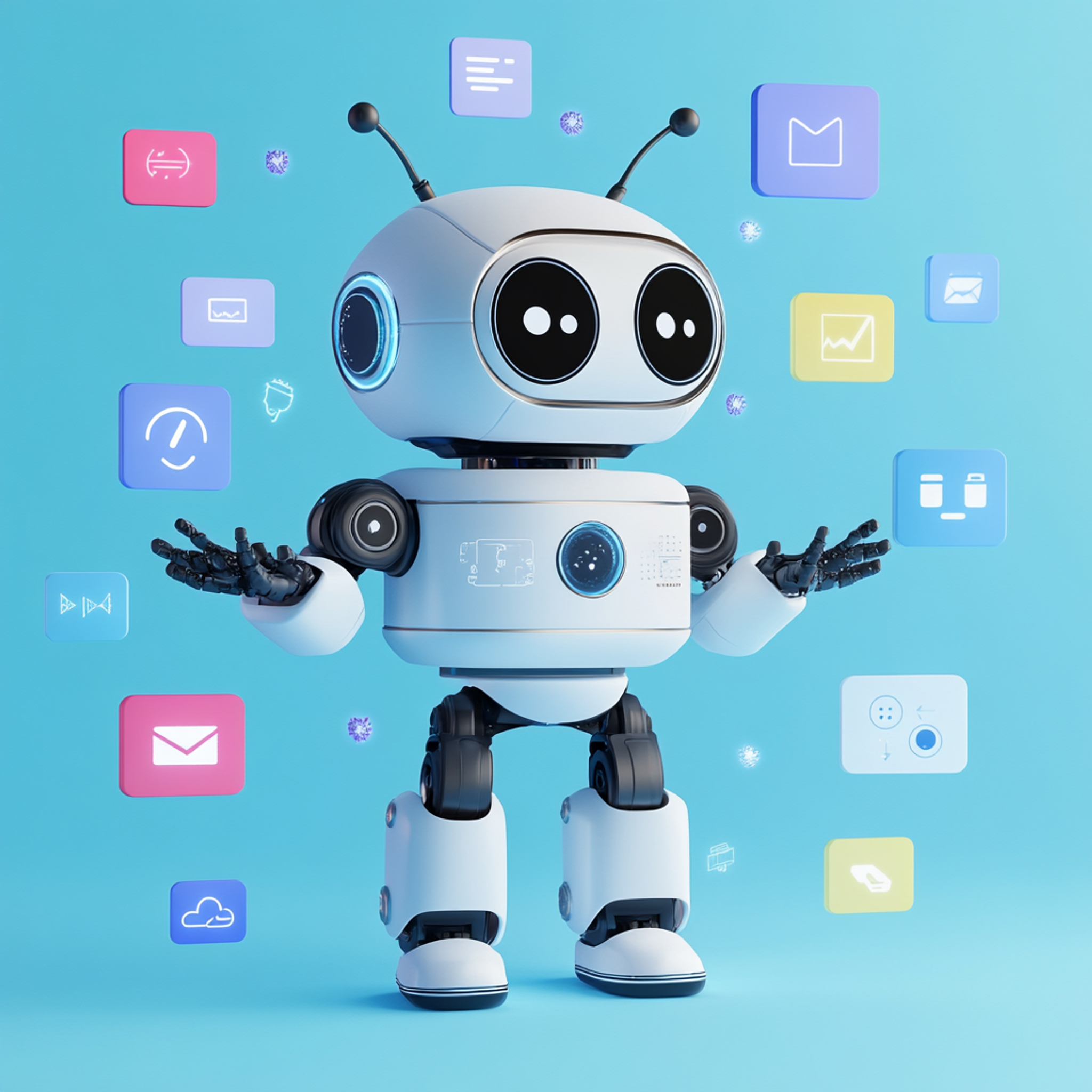
Mobile app interactions have undergone a fundamental shift. Users no longer accept clunky forms or complex navigation menus as standard interfaces. Instead, they expect natural conversations, voice commands, and intelligent responses that adapt to their needs in real-time.
This transformation goes beyond adding a chat feature or voice search button. Modern conversational interfaces represent a complete rethinking of how people interact with digital products. From booking services to managing daily tasks, apps now facilitate fluid conversations that feel increasingly human while delivering unprecedented functionality.
The technologies driving this change encompass voice assistants, intelligent chatbots, and sophisticated natural language processing systems. These innovations enable faster responses, personalized recommendations, and emotionally aware interactions that streamline workflows previously bogged down by traditional interface constraints.
For businesses developing mobile applications, understanding conversational design principles has become essential for competitive success. The shift represents both opportunity and necessity as user expectations continue evolving toward more intuitive, accessible interaction patterns.
Let's explore how these technologies are reshaping mobile user experiences and what they mean for the future of app development.
Foundation Technologies Driving Conversational Experiences

The conversational revolution in mobile apps stems from significant advances in core technologies that enable natural human-computer interaction. These aren't superficial additions to existing interfaces but fundamental infrastructure changes that alter how users engage with digital products.
Voice recognition accuracy has improved dramatically, reaching near-human levels in optimal conditions. Machine learning models can now process context, understand intent, and maintain conversation continuity across multiple interactions. Real-time processing capabilities allow for immediate responses that feel natural rather than robotic.
Natural language understanding has evolved from simple keyword matching to sophisticated intent recognition. Modern systems can parse complex queries, handle ambiguous requests, and even detect emotional undertones in user communications. This capability enables apps to respond appropriately to user mood and urgency levels.
The integration of these technologies creates synergistic effects that exceed the sum of their parts. When voice recognition combines with contextual understanding and real-time processing, the result is conversational experiences that feel genuinely intelligent and responsive to user needs.
Edge computing has enabled many of these capabilities to run directly on mobile devices, reducing latency while improving privacy. Users can enjoy conversational features without constant internet connectivity or concerns about data transmission to remote servers.
Voice AI Integration in Mobile Applications

Voice AI has transitioned from experimental feature to essential functionality in modern mobile applications. Users increasingly expect hands-free interaction capabilities, especially in scenarios where traditional touch interfaces prove inadequate or inconvenient.
The global voice recognition market continues expanding rapidly, with projections indicating growth to $50 billion by 2029. This expansion reflects not just technological improvement but fundamental changes in user behavior and expectations across demographic groups.
Voice interfaces excel in specific use cases where speed and convenience matter most. Shopping applications use voice for product searches and cart management. Support systems employ voice for initial problem diagnosis and solution routing. Navigation apps leverage voice for route guidance and real-time updates.
Voice AI Advantages in Mobile Context: Voice AI provides unique benefits that traditional interfaces cannot match. Hands-free operation enables multitasking and accessibility for users with different physical capabilities. Speed advantages become apparent in complex queries that would require multiple taps and screens in traditional interfaces.
Contextual intelligence represents voice AI's most significant advancement. Modern systems can maintain conversation history, understand references to previous interactions, and adapt responses based on user patterns and preferences. This capability creates more natural dialogue flows that reduce cognitive load.
DETL specializes in integrating voice AI capabilities that enhance rather than complicate user experiences. Our approach focuses on identifying the optimal use cases for voice interaction while maintaining intuitive fallback options for users who prefer traditional interfaces.
Smart Device Ecosystem Integration

Voice-enabled mobile apps gain exponential value when they connect to broader smart device ecosystems. Users no longer view voice assistants as isolated tools but as central control hubs for their connected environments.
The smart speaker market has exceeded $9.6 billion globally, indicating widespread adoption of voice-controlled devices beyond smartphones. This growth creates opportunities for mobile apps to serve as primary interfaces for managing complex smart home and office environments.
Modern voice interfaces can coordinate multiple devices simultaneously, executing complex routines through simple commands. Users can adjust lighting, temperature, security systems, and entertainment devices using natural language requests processed through mobile applications.
Ecosystem Integration Benefits: Centralized control through voice commands eliminates the need for multiple device-specific apps and interfaces. Users appreciate the simplicity of managing diverse systems through familiar conversational patterns rather than learning different control schemes for each device.
Automation capabilities become more sophisticated when mobile apps can orchestrate smart device interactions. Morning routines, security protocols, and energy management systems can respond to voice commands while adapting to user preferences and environmental conditions.
The proliferation of connected devices creates data opportunities for mobile apps that can analyze usage patterns and suggest optimizations. Voice interfaces become more valuable as they learn from user behavior and proactively offer relevant suggestions.
DETL develops mobile applications that serve as intelligent hubs for smart device ecosystems, creating seamless user experiences that extend far beyond the smartphone itself.
Multimodal Interface Design Principles

Effective conversational interfaces combine multiple interaction modes rather than relying solely on voice or text input. Users benefit from flexibility in how they communicate with applications, adapting their interaction style to context, environment, and personal preferences.
The global multimodal interface market reached $19.5 billion in 2023, reflecting growing recognition that diverse input methods create superior user experiences. Modern apps successfully integrate voice, touch, gesture, and text inputs to accommodate different usage scenarios.
Multimodal Design Advantages: Users can switch between interaction modes seamlessly based on their current situation. Voice commands work well in hands-free scenarios, while touch remains optimal for precise selections. Text input provides privacy in public settings, and gesture control offers intuitive spatial manipulation.
Accessibility improvements emerge naturally from multimodal design. Users with different physical capabilities can choose interaction methods that work best for their needs. Visual impairments may favor voice interaction, while hearing impairments benefit from visual feedback and touch controls.
Cognitive load reduction occurs when interfaces align with natural human communication patterns. People naturally combine speech, gesture, and visual cues in face-to-face conversation. Multimodal interfaces that mirror these patterns feel more intuitive and require less learning time.
Implementation Considerations: Successful multimodal interfaces require careful attention to mode transitions and consistency. Users should be able to start tasks using one interaction method and complete them using another without losing context or functionality.
DETL designs multimodal interfaces that feel natural and responsive, ensuring that each interaction mode enhances rather than complicates the overall user experience.
Natural Language Processing in Mobile Apps

Natural language processing forms the intelligence layer that transforms simple voice recognition into meaningful conversation. Modern NLP systems can interpret complex user intentions, maintain contextual awareness, and generate appropriate responses that advance user goals.
The NLP market is projected to reach $156.8 billion by 2030, driven by improvements in language models and their practical applications in mobile environments. These advances enable apps to understand nuanced requests and respond with increasingly sophisticated assistance.
NLP Capabilities in Mobile Context: Intent recognition allows apps to understand what users want to accomplish, even when requests are stated indirectly or incompletely. Context maintenance enables multi-turn conversations where later requests reference earlier information without requiring repetition.
Sentiment analysis helps apps detect user emotions and adjust responses accordingly. Frustrated users might receive more direct assistance, while satisfied users could be offered additional features or upselling opportunities.
Multilingual support expands app accessibility across diverse user bases. Modern NLP systems can detect language automatically and provide natural responses in the user's preferred language without manual configuration.
Technical Implementation: Edge-based processing enables real-time NLP analysis without constant internet connectivity. Users enjoy responsive experiences while maintaining data privacy through on-device processing for sensitive information.
Integration with real-time data sources allows NLP systems to provide current, relevant information rather than generic responses. Apps can access user history, location data, and external APIs to enhance conversation quality.
DETL implements NLP solutions that understand context and intent while maintaining fast response times and user privacy throughout the conversation experience.
Modern Chatbot Evolution and Capabilities

Chatbots have evolved far beyond simple FAQ responders to become sophisticated conversational agents capable of complex task completion and emotional understanding. Modern implementations serve as virtual assistants that can handle sales, support, onboarding, and retention activities across mobile platforms.
Today's chatbots integrate with comprehensive business systems, accessing customer data, inventory information, and service capabilities to provide meaningful assistance. They can process transactions, schedule appointments, troubleshoot problems, and escalate complex issues to human agents when necessary.
Advanced Chatbot Functions: Proactive engagement enables chatbots to initiate conversations based on user behavior patterns, app usage data, or external triggers. Users receive relevant suggestions and assistance before they explicitly request help.
Personalization capabilities allow chatbots to adapt their communication style, product recommendations, and service offerings based on individual user preferences and history. Each interaction becomes more relevant and valuable over time.
Cross-platform continuity ensures that conversations can resume seamlessly across different devices and touchpoints. Users can start discussions on mobile apps and continue them on desktop interfaces without losing context.
Business Impact: Operational scaling becomes possible as chatbots handle routine inquiries and transactions without human intervention. Businesses can support larger user bases while maintaining consistent service quality and response times.
Data collection through conversational interactions provides valuable insights into user needs, preferences, and pain points. This information helps improve products and services while identifying new business opportunities.
DETL develops intelligent chatbots that enhance user experiences while providing measurable business value through improved efficiency and customer satisfaction.
Emotional Intelligence in Conversational Interfaces

Emotional intelligence represents the next frontier in conversational interface design. Beyond understanding what users say, modern systems can detect how they feel and adjust responses to provide more appropriate and effective assistance.
Sentiment analysis technology can identify frustration, satisfaction, urgency, and other emotional states through text analysis and voice pattern recognition. This capability enables apps to escalate urgent issues, provide additional support for frustrated users, or offer complementary services to satisfied customers.
Emotional AI Applications: Adaptive response strategies allow conversational interfaces to modify their tone, pace, and approach based on detected user emotions. Stressed users might receive more direct, solution-focused assistance, while casual users could engage in more exploratory conversations.
Conflict resolution capabilities help chatbots de-escalate tense situations through appropriate language choices and service offerings. Early detection of user frustration enables proactive intervention before negative experiences intensify.
Personalized emotional profiles develop over time as systems learn individual user communication patterns and preferences. Some users prefer formal interactions, while others respond better to casual, friendly approaches.
Implementation Strategies: Voice pattern analysis provides additional emotional context beyond text sentiment analysis. Tone, pace, and volume variations offer insights into user emotional states that inform response strategies.
Visual feedback elements like interface animations, color changes, and haptic responses can acknowledge user emotions and create more engaging conversational experiences.
DETL integrates emotional intelligence capabilities that make conversational interfaces feel more human while maintaining appropriate professional boundaries and user privacy.
Omnichannel Integration and Personalization

Effective conversational interfaces operate as part of comprehensive omnichannel strategies that maintain context and continuity across all user touchpoints. Modern users expect consistent experiences whether they interact through mobile apps, websites, social media, or physical locations.
Research indicates that 78% of purchasing decisions are influenced by experiences across multiple digital channels. For Generation Z users, personalization has become a requirement rather than a preference, with nearly half disengaging from generic or irrelevant interactions.
Omnichannel Conversation Benefits: Context preservation ensures that users don't repeat information or restart conversations when switching between platforms. Customer service interactions begun on mobile apps can continue seamlessly through email or phone support.
Cross-platform personalization leverages data from all touchpoints to provide relevant recommendations and assistance. Purchase history, browsing behavior, and support interactions inform conversational responses across channels.
Unified customer profiles enable conversational interfaces to access comprehensive user information while maintaining privacy and security standards. Each interaction becomes more valuable as systems understand user preferences and history.
Personalization Tactics in Conversational UI:
| Tactic | Description |
|---|---|
| Dynamic Content Delivery | Tailor notifications and responses in real time based on behavior and session data |
| Smart Segmentation | Group users by behavior to trigger more precise messaging and recommendations |
| Adaptive Conversation Flows | Modify tone, timing, and structure of responses based on subtle intent signals |
Data integration from customer relationship management systems, analytics platforms, and third-party services enables sophisticated personalization without compromising user experience or system performance.
DETL designs omnichannel conversational experiences that feel seamless and personalized while respecting user privacy and maintaining consistent brand voice across all touchpoints.
Enterprise Scaling with Conversational AI

Enterprise organizations increasingly rely on conversational AI to scale customer interactions, automate routine processes, and maintain service quality across growing user bases. These systems handle complex workflows while providing data insights that inform business strategy and operations.
The conversational AI market is projected to generate $57 billion globally within three years, reflecting both adoption rates and strategic value for businesses across industries. Organizations that implement these technologies effectively gain competitive advantages through improved efficiency and customer satisfaction.
Enterprise Implementation Benefits: Operational automation handles routine inquiries, transaction processing, and information retrieval without human intervention. Support teams can focus on complex issues while conversational AI manages standard requests consistently and efficiently.
Scalability advantages enable businesses to serve larger customer bases without proportional increases in support staff. Peak demand periods become manageable through AI systems that maintain response quality regardless of volume.
Data analytics from conversational interactions provide insights into customer needs, product performance, and service gaps. These insights inform product development, marketing strategies, and operational improvements.
Strategic Considerations: Integration with existing business systems ensures that conversational AI can access necessary information and execute appropriate actions. Customer databases, inventory systems, and service platforms must work together seamlessly.
Quality control measures maintain conversation standards and brand voice across all automated interactions. Human oversight and feedback loops help improve AI responses while ensuring appropriate escalation for complex situations.
DETL develops enterprise-grade conversational AI solutions that integrate with existing business systems while providing scalable, intelligent customer interactions that drive measurable business results.
Future of Conversational Mobile Experiences
The evolution of conversational interfaces continues accelerating as new technologies emerge and user expectations rise. Voice AI, natural language processing, and emotional intelligence capabilities will become more sophisticated while remaining accessible to businesses of all sizes.
Integration with augmented reality and virtual reality platforms will create new conversational possibilities that blend digital and physical environments. Users will interact with virtual assistants that understand spatial context and can manipulate three-dimensional interfaces through natural language commands.
Predictive capabilities will enable conversational interfaces to anticipate user needs based on patterns, preferences, and environmental factors. Apps will proactively offer assistance and suggestions before users explicitly request help.
Emerging Opportunities: Cross-device continuity will improve as conversational interfaces maintain context across smartphones, smart speakers, vehicles, and wearable devices. Users will experience truly seamless assistance regardless of their current device or location.
Industry-specific conversational interfaces will emerge for healthcare, finance, education, and other specialized domains. These systems will understand professional terminology and regulatory requirements while providing expert-level assistance.
Privacy-preserving AI technologies will enable sophisticated conversational features while maintaining user data security and compliance with evolving regulatory requirements.
At DETL, we stay ahead of conversational interface trends to help our clients build mobile applications that meet current user expectations while remaining adaptable for future innovations. Our development approach balances cutting-edge technology with practical business requirements and user needs.
Whether you're implementing voice AI, developing intelligent chatbots, or creating multimodal interfaces, DETL provides the technical expertise and strategic guidance necessary to build successful conversational experiences that drive user engagement and business growth.
The future of mobile apps lies in natural, intelligent conversations that feel human while delivering unprecedented functionality. Organizations that embrace these technologies today will lead the market as conversational interfaces become the standard for digital interaction.




